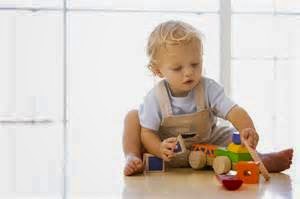PLAY THERAPY
Play therapy is generally employed with children aged 3 through 11 and provides a way for them to express their experiences and feelings through a natural, self-guided, self-healing process. As children’s experiences and knowledge are often communicated through play, it becomes an important vehicle for them to know and accept themselves and others.
Play therapy is a form of counseling or psychotherapy that uses play to communicate with and help people, especially children, to prevent or resolve psychosocial challenges. This is thought to help them towards better social integration,growth and development.
Play therapy can also be used as a tool of diagnosis. A play therapist observes a client playing with toys (play-houses, pets, dolls, etc.) to determine the cause of the disturbed behavior. The objects and patterns of play, as well as the willingness to interact with the therapist, can be used to understand the underlying rationale for behavior both inside and outside the session..
According to the psychodynamic view, people (especially children) will engage in play behavior in order to work through their interior obfuscations and anxieties.In this way, play therapy can be used as a self-help mechanism, as long as children are allowed time for "free play" or "unstructured play." Normal play is an essential component of healthy child development.
One approach to treatment is for play therapists to use a type of desensitization or relearning therapy to change disturbing behavior, either systematically or in less formal social settings. These processes are normally used with children, but are also applied with other pre-verbal, non-verbal, or verbally-impaired persons, such as slow-learners, or brain-injured or drug-affected persons.
Play therapy can be divided into two basic types: nondirective and directive. Nondirective play therapy is a non-intrusive method in which children are encouraged to work toward their own solutions to problems through play. It is typically classified as a psychodynamic therapy.In contrast, directive play therapy is a method that includes more structure and guidance by the therapist as children work through emotional and behavioral difficulties through play. It often contains a behavioral component and the process includes more prompting by the therapist. Directive play therapy is more likely to be classified as a type of cognitive behavioral therapy. Both types of play therapy have received at least some empirical support. On average, play therapy treatment groups when compared to control groups improve by .8 standard deviations.


No comments:
Post a Comment